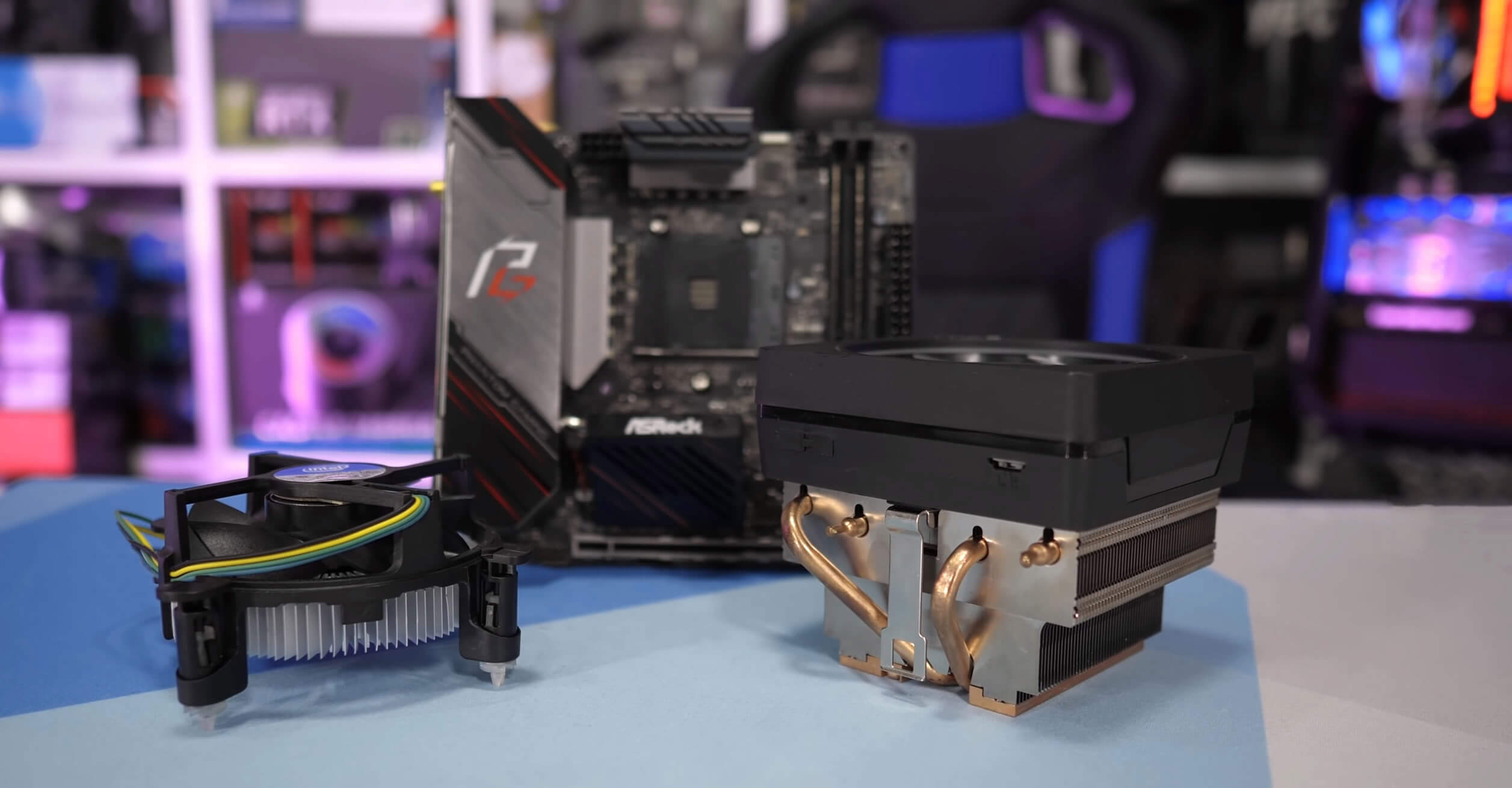You've seen our Ryzen 5 3600 vs. Core i5-9400F battle in over 30 games, you've also seen the R9 3900X and Core i9 9900K duking it out in a few dozen titles, but today we have the most epic battle of them all... Intel vs. AMD's box cooler battle. Ok, so we may be overselling this one, but it is something we've wanted to do for a long time but hadn't got around to do it using a satisfactory test method.
In a failed attempt last year we cut the mounting hardware off the Wraith Stealth and the Intel box cooler and jerry-rigged them onto an AM4 motherboard with similar levels of pressure, the results were interesting but since the correct amount of pressure wasn't being applied to either cooler, we decided not to publish these findings.
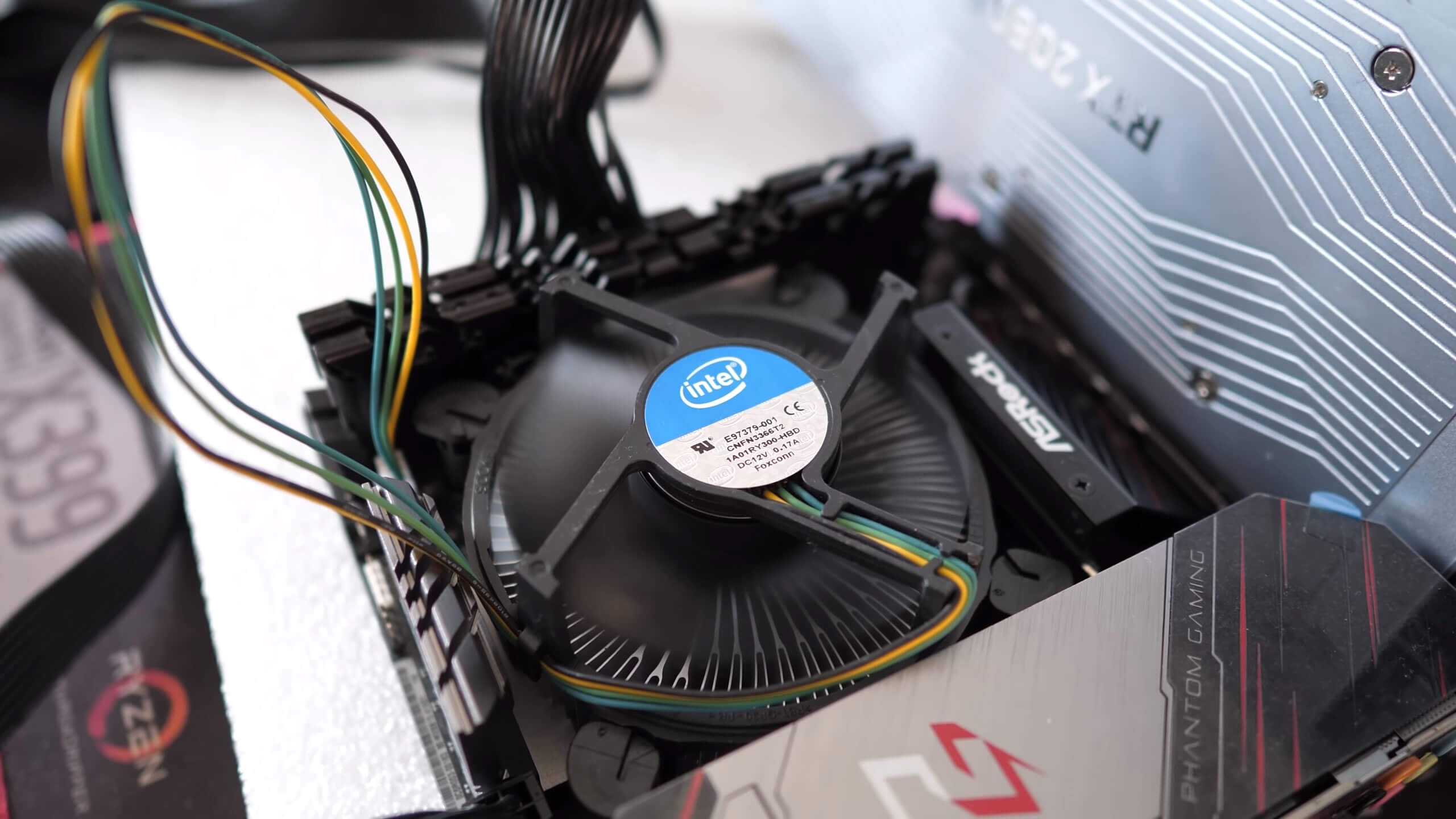
But recently shortly after testing the Wraith Spire, we received a tip to compare Intel and AMD's box coolers using the new Asrock X570 Phantom Gaming-ITX/TB3 motherboard. This particular board uses LGA1156 mounting holes, meaning it has native support for Intel coolers. Asrock did this to save space on the board and we weren't going to miss the opportunity to stick the crappy Intel box cooler on the Ryzen 5 3600. So we bought a Phantom Gaming-ITX and got to testing.
Now, this motherboard only supports Intel coolers, so to test the Wraith range on the same Ryzen 5 3600 CPU we used the Asrock Steel Legend. Since we're using the exact same CPU with the same settings, this should still provide accurate results with the only potential issue being the board layout. The Mini-ITX board is cramped and there's no open space around the cooler, this will negatively impact CPU cooling performance. Therefore to replicate this on the Steel Legend which is a more open motherboard, we encompassed the Wraith coolers with a strip of cardboard, modified to replicate the air-flow obstacles of the ITX board.
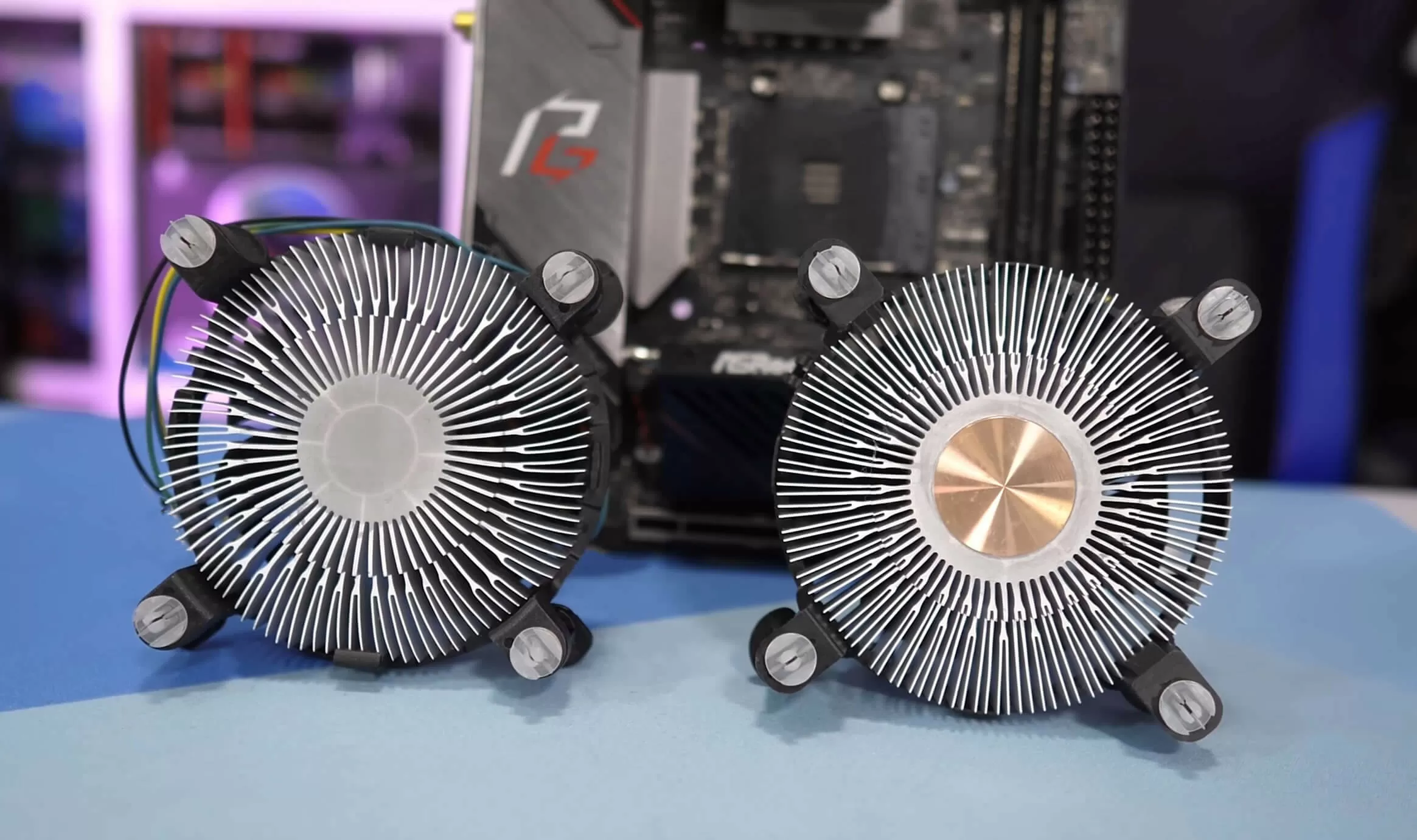
The next issue we ran into was fan speed. Typically, Intel box coolers are noisy buggers that spin very fast. Last time we tested one with the Core i7-8700 on a Z390 board it spun at between 3000 - 3500 RPM. On the Phantom Gaming-ITX the fan never spun faster than 2100 RPM which is an issue for the Intel cooler as it relies on fan speed to keep temperatures under control, or at least stops the CPU from melting through the PCB. We messed around for quite some time but couldn't get the fan to spin at full speed for more than a few seconds.
With the limited fan speed we decided to target 2000 RPM with all the coolers tested, so with fan speeds somewhat normalized and the same air-flow restrictions in place, we once again went for the test. For truly accurate data we should have locked the voltage and multiplier but since this isn't meant to be a scientific test but something to satisfy our curiosity we left the R5 3600 on auto to do its thing.
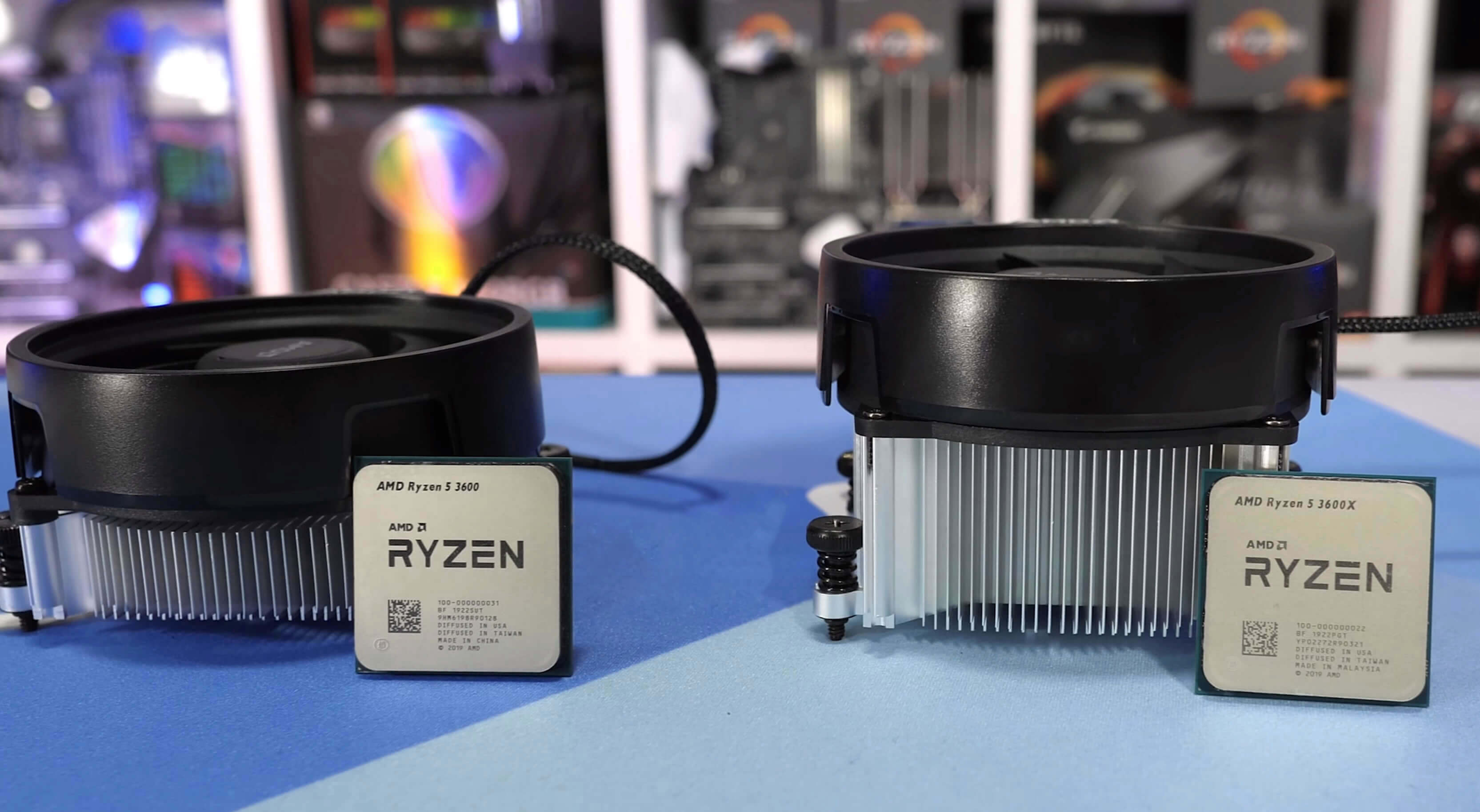
There have been many different Intel cooler models over the years, we're using the Intel E97378-001 and E97379-001 coolers – pretty catchy names, we know. The E97378 features a copper core with aluminum fins and was first bundled with Sandy Bridge Core i5 and i7 processors. The E97379 is an all-aluminum cooler and it was first bundled with the Core i3 Sandy Bridge processors.
Intel used the copper insert version for not just the Sandy Bridge i5 and i7 processors, but also for the Ivy Bridge and Haswell generations. By the time Skylake was released Intel dumped the copper model entirely, in favor of the cheaper aluminum model. In other words, CPUs such as the 6-core/12-thread Core i7-8700 came with the lousy aluminum cooler which I recall testing about how it throttled and ran at 100 C out of the box.
But Intel doesn't care and they're shipping the newer Core i7-9700, a $330 8-core processor, with the exact same cooler, which is tragic to say the least.
The Results
The Wraith Prism is the cooler AMD supplies with the Ryzen 7 3700X and 3800X along with the Ryzen 9 3900X. We saw the R5 3600 peak at just 71 degrees when spinning its fan at 2100 RPM, and remember it was choked with cardboard. So the Prism set the benchmark at 71 degrees.
Coming in just a few degrees warmer is the copper version of the Wraith Spire. It allowed the Ryzen processor to hit 74 degrees, though the CPU dropped down 50 MHz at the slightly higher temperature, so the thermal load was ever so slightly reduced. Then we have the all-aluminum version of the Spire which comes with the 3600X, it allowed the 3600 to peak at 77 degrees which is getting up there.
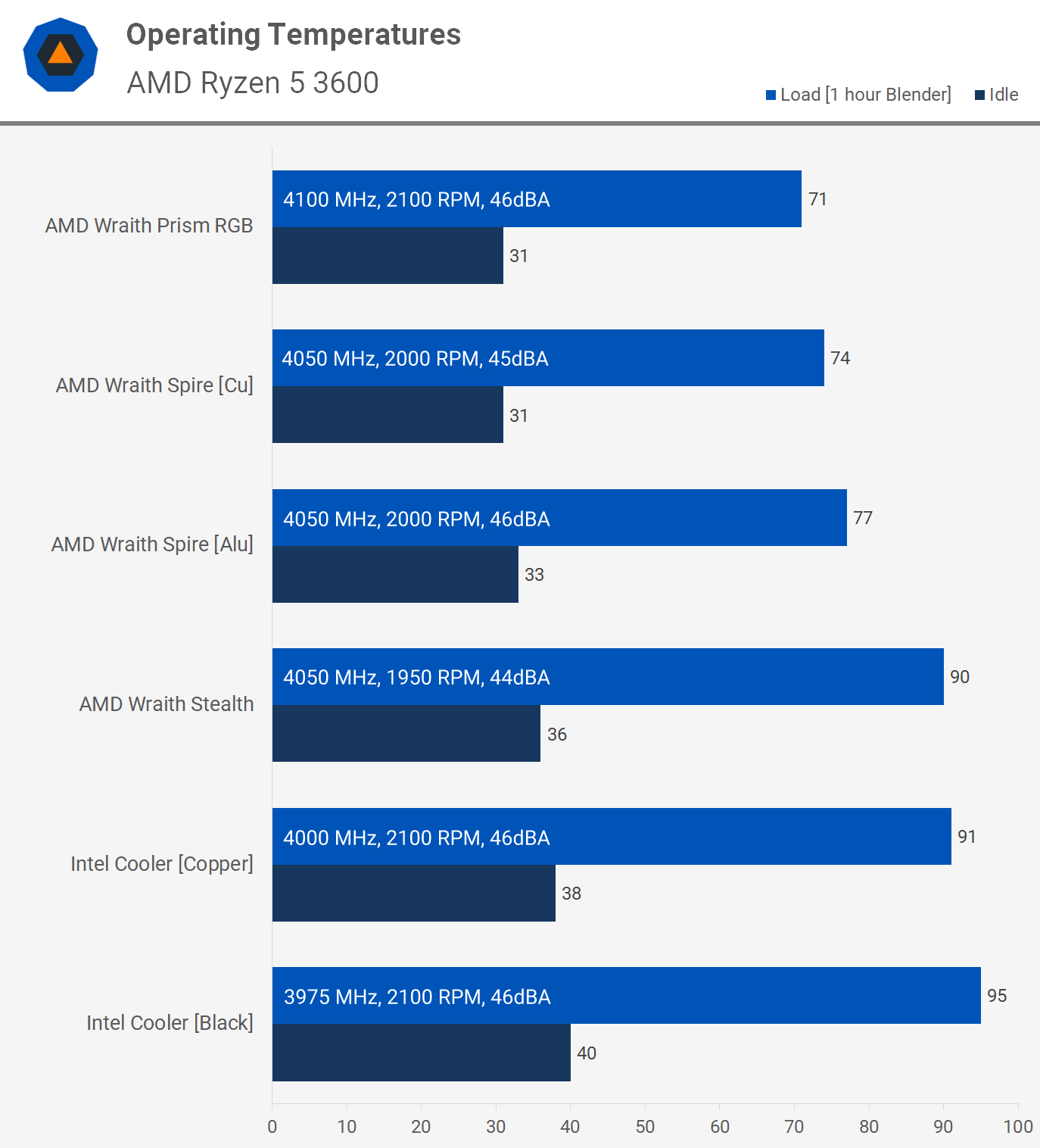
The Wraith Stealth saw the Ryzen processor hit 90 degrees and that's far from ideal, at this temperature the R5 3600 still maintained 4050 MHz but it had to be close to dropping down to 4000 MHz, as this is the very frequency we saw with the copper version of Intel's box cooler and it only ran a degree hotter.
The aluminum box cooler that Intel's been bundling with all their non-K SKUs for years allowed the R5 3600 to hit 95 degrees which forced it down to 3975 MHz.
Was this a pointless test? We had some fun putting it together to be honest. Many of you will be shocked to learn that the Intel's box cooler shouldn't be put on a 65w CPU, let alone one that can chew down 140 watts. Granted, the Wraith Stealth wasn't much better.
Our favorite budget CPU, the Ryzen 5 3600 comes bundled with the Stealth but it's such a good value CPU at $200 that throwing another $20 or so at it isn't a big deal. The $220-$300 CPUs have always been upgraded to the Wraith Spire and that allowed the Ryzen 5 3600 to operate almost 20 degrees cooler. Then if you spend $330 or more, you get the Wraith Prism and that ran 24 degrees cooler.
It's less forgivable that Intel ships their current generation Core i7-9700 with that aluminum cooler. The thing weighs just 168 grams and we know it causes the 8700 to throttle quite heavily, so it will do the same for the 9700. no doubt. Meanwhile, for the same price the Ryzen 7 3700X comes with the 552 gram Wraith Prism, that's over 3 times the metal.
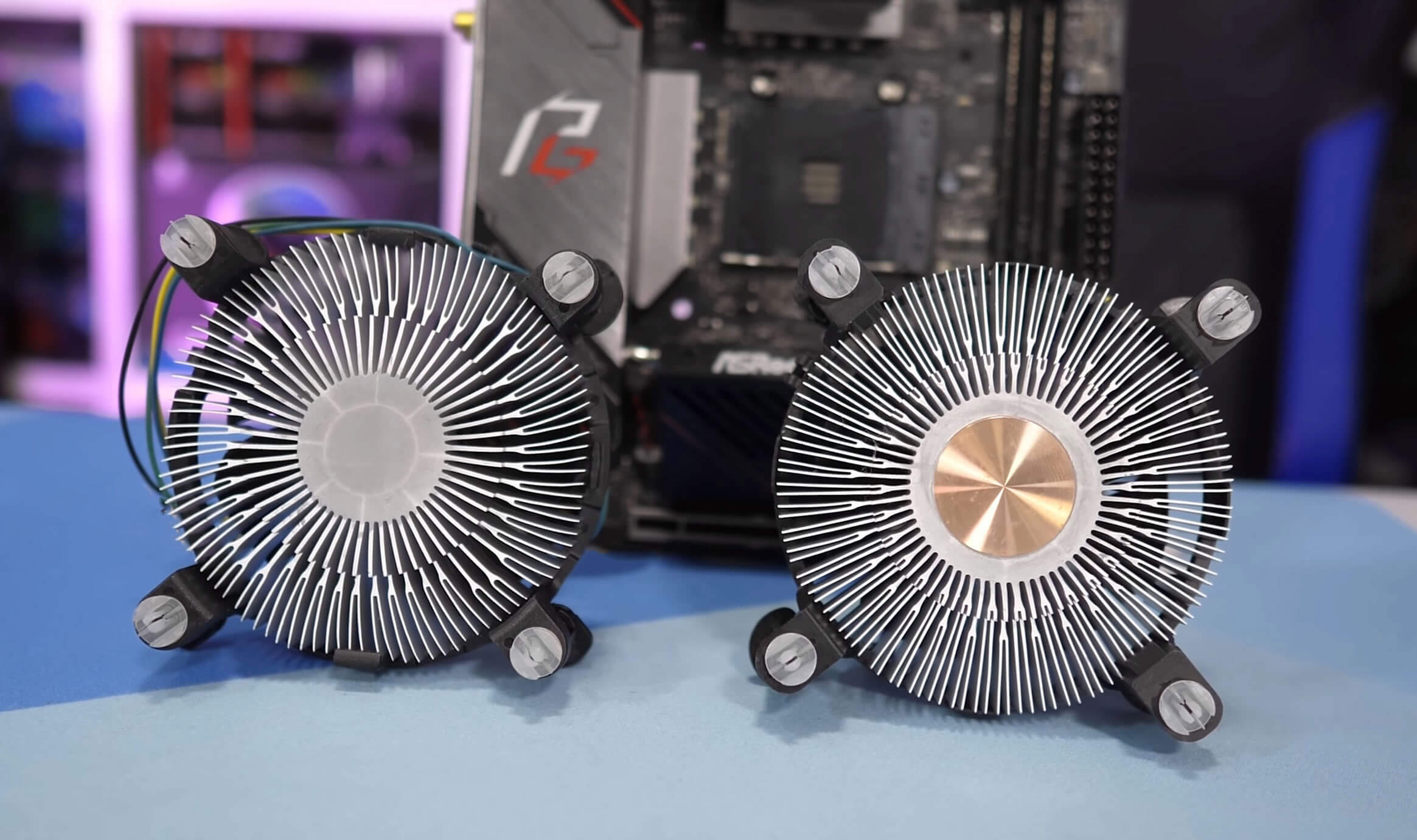
A little over a year ago we wrote a "Needs to Fix" editorial series dedicated to things we believed Intel, AMD and Nvidia should address. There were plenty of Intel issues to fix and one of the first things we mentioned then was the box cooler, but nothing has changed. It'll be interesting to see if they make any improvements in this area for the upcoming 10th generation Core series.
Although AMD's Wraith coolers don't get a ton of love from everyone – and evidently you can do better by spending as little as $20 - $30 on an aftermarket tower style cooler – the convenience of a decent box cooler means upgrading is not a must and ultimately many people don't. We've found the 3700X perfectly usable with the Wraith Prism that comes in the box. It's not particularly loud and it runs at 78 degrees stock in a well-ventilated case.
We don't expect these results to be a complete surprise for many of you, and if anything the Intel box cooler might have done better than expected, though note this was helped by the Ryzen 5 3600 dropping down in frequency a little.
Shopping Shortcuts:
- AMD Ryzen 5 3600 on Amazon, Google Express
- AMD Ryzen 7 3700X on Amazon, Google Express
- AMD Ryzen 9 3900X on Amazon, Google Express
- Intel Core i5-9600K on Amazon, Google Express
- Intel Core i9-9900K on Amazon, Google Express
- AMD Radeon RX 5700 XT on Amazon, Google Express
- AMD Radeon RX 5700 on Amazon, Google Express
- GeForce RTX 2070 Super on Amazon, Google Express
- GeForce RTX 2060 Super on Amazon, Google Express
